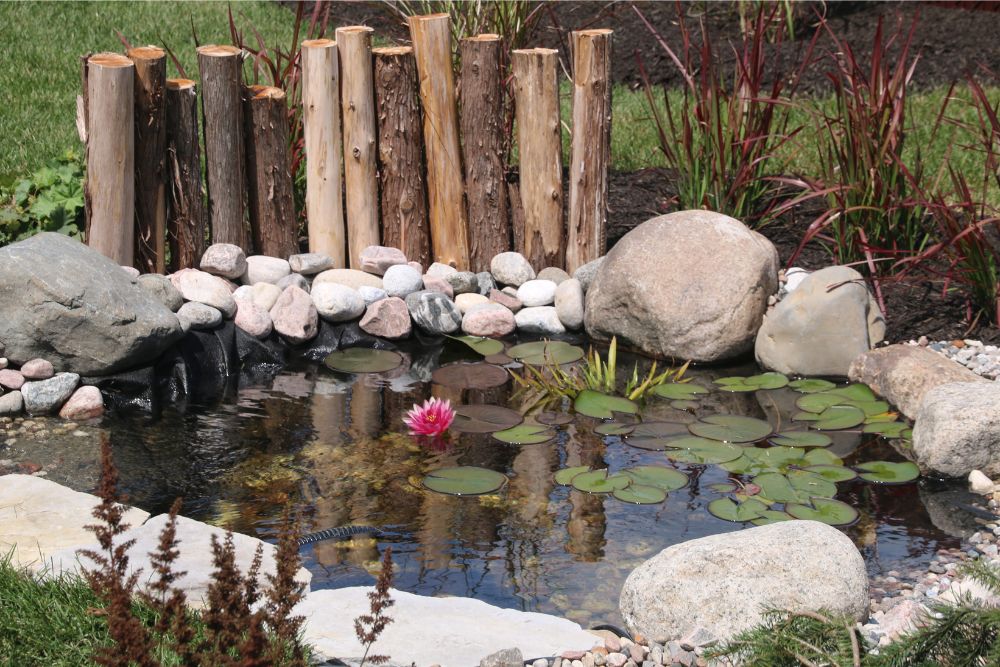June 2023 has gone down in history as the warmest on record. For those who were lucky enough to spend those sunny, dry days on the beach will cherish the fun memories the month provided. But for garden enthusiasts and wildlife, the heat and lack of rain had devastating effects. The changes in climate are also having a distinct impact on our ponds, lakes and reservoirs (greatly affecting farmers too!). We need to be mindful of these long dry periods and steps we can take to help our ponds continue to thrive. It is also intense periods of rain that can also have profound effects.
We always advocate lining man-made water features with rubber pond liners because they are resistant to UV rays and don’t go brittle nor crack during adverse weather conditions. The superior quality of Epalyn and Butyl pond liners are guaranteed to keep your pond water-tight provided they are installed above a geotextile liner to prevent sharp stones tearing the liner.
Let’s look at other steps we need to consider to protect ponds and wildlife during periods of extreme weather.
Garden ponds help combat climate change
According to Mike Jeffries, Associate Professor in Ecology at Northumbria University, garden ponds are more than just an attractive feature, they also play an important role in helping combat climate change. We already know that ponds increase garden biodiversity and help prevent flooding by slowing down the flow of water in heavy rains. But did you know that ponds also store carbon? A recent study suggests that in the sediment accumulated at the bottom of ponds, there’s potential to hold more carbon per square metre per year, than equivalent areas of grassland and woodland. Ponds are the most common and widespread habitat for all plants and animals.
We have lost over 50% of our ponds in the last century, in favour of neat lawns and paving. Ponds matter and are one of the most important things you can do for wildlife. They are easy to create and their value is now firmly understood. No longer overlooked, the importance of ponds in the carbon cycle and in fighting climate change is becoming apparent.
Steps to help pond during hot weather conditions
Hot, dry conditions can bring many challenges to ponds particularly to those home to Koi or goldfish. However, there are things we can do to minimise any negative impact.
- Monitor the temperature of the water and take action if it goes above 27 degrees Celsius (15 to 25 degrees C is optimal).
- Warmer the water becomes, the lower the oxygen levels. Watch out for fish swimming to the surface and gasping for breath leading to stress.
- Shade blocks UV rays from warming the water. Planting broad leaved plants such as water lilies and, or installing a temporary shade cover over your pond will help maintain a healthy temperature.
- Aquatic plants release oxygen during photosynthesis. This process offers an eco-friendly way to aerate the water. Plants not only take-up carbon-dioxide and release oxygen but also absorb excess nutrients that would otherwise increase risk of algae growth thereby improving water quality.
- Add a water feature to keep water moving and to create bubbles allowing a natural diffusion of oxygen into the water.
- Don’t over feed fish to reduce waste. Uneaten food will start to decompose over time and affect natural nutrient balance in the water. The result could lead to algae blooms.
- Remove debris before it decomposes.
- Make sure pond is deep enough to retain a bottom layer of cold water.
Your pond during periods of heavy rainfall
Reduce rainwater run-off into your pond by minimising man-made impervious surfaces. Plants absorb water so grow sufficient to cover your flower-beds including native plants which have extensive root systems to absorb rainwater before it becomes ‘run-off. Reduce the slope of your garden and add a gravel area around the edge of your pond to drain excess water. If your pond is at risk of flooding, scoop out excess water.
According to the RHS, managing our garden and ponds will help offer a buffer for wildlife in a changing climate. Ponds provide a life line to wildlife such as dragonflies, damselflies and amphibians.






